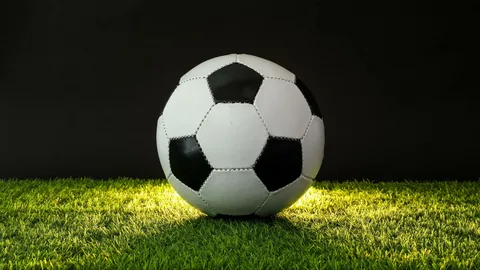Kicking a soccer ball is one of the simplest and most exciting skills in the game of soccer. Biomechanics concerns this action with the complex interaction of the human body with the soccer ball, involving muscle coordination, joint mechanics, and the physics of motion. Interaction knowledge not only helps enhance performance but also prevents injury; hence, understanding it is highly essential for players, coaches, and sports scientists.
Mechanics of the Kick
Preparation to kick a soccer ball involves some biomechanical activities occurring in the player’s body. First is placement, where a player dribbles up the soccer ball. This consists of a sequence of movements that lay the foundation for a satisfactory strike. Stance before the kick is an important aspect; players usually assume a plant foot position that offers stability and balance. The non-kicking leg is bent and placed next to the ball, while the kicking leg is withdrawn.
As the player initiates the kick, the kicking leg extends forward. In this case, it is at the hip joint that most of the work is done; large muscles such as the iliopsoas and gluteus maximus can be contracted to develop powerful forces. The knee then extends rapidly, and as the foot approaches the ball, the ankle joint is ‘locked’ so that a clean strike can be made. It is through this kinetic chain-from the core through the hips, knees, and down to the ankle-that underlines the finesse in creating a forceful propellant needed to propel the soccer ball.
Interaction with the Soccer Ball
The interaction of the foot with the soccer ball is dynamic and determines the trajectory, spin, and speed of the ball. A size 4 soccer ball is uniform for youth competition, while the regular size is size 5 for professional play. The size, weight, and material make a difference in the response once the ball is in contact. For example, a Nike soccer ball engineered with sophisticated technology will differ from the conventionally known Adidas soccer balls, which again will come into play to find out how players need to alter their kicking technique to accommodate it.
The point of contact and part of the foot used vary upon the type of kick: whether it is a driven shot, a volley, or even a curling free kick. The instep is commonly used for power shots while the inside of the foot is utilized for passing or curling the ball. The spin and movement of the soccer ball are determined by how it is kicked; if done properly, it can even dip and curve, making it difficult to predict by the goalkeeper.
Kicking Techniques and Their Biomechanics
Various kicking techniques involve different biomechanical principles. For example, driven shots involve power and distance. A maximal extension of the hip and knee is required in this respect. Hence, the player would want to hit the middle part of the laces while trying to make contact, knowing that the contact point on the ball needs to be low for the right trajectory.
By contrast, the chip shot is delicate, touchy, and upward-oriented. Here, there is greater knee and ankle flexion, which allows the player to chip the ball over into space away from an opponent or goalkeeper. The biomechanics associated with each kick provide a detailed representation of muscle memory and the proper technique a player needs to be aware of and refine through practice.
Kicking-Related Injuries
While kicking is an essential soccer skill, it may also lead to injury, especially to the lower extremities: hamstring strains, knee ligament injuries, and ankle sprains. Biomechanical knowledge helps prevent such kinds of injuries. Some players may illustrate faulty mechanics related to kicking, such as hyperextension of the knee or lack of stability about the ankle, thus making them more susceptible to injury.
This will be achieved by the strengthening and conditioning programs, which enhance the muscles that support the joints involved in kicking, hence allowing the players to maintain the formal requirements of the movements and minimizing the occurrence of injury. Moreover, flexibility training, strength exercises, and proper warm-ups should be incorporated into soccer routines in order for the players to perform with maximum safety.
Role of Technology in Kicking
Changes in technology have also contributed to the biomechanics of kicking. Smart soccer balls with sensors can provide feedback about kick power, angle, and spin, allowing players to analyze their real-time technique. Such information might prove invaluable in refining one’s skills and improving performance.
Also, the power of innovation in soccer ball design has made Nike soccer balls and Adidas soccer balls yield considerably improved performance characteristics. Each of these balls is designed to fly more stably and accurately through the air, and players need to adjust their kicking style and technique to match that fact. Understanding how different designs interact with the biomechanics of kicking will further give a player the competitive edge they need.
Conclusion
The biomechanics of kicking a soccer ball encompass subjects ranging from anatomy to physics and technology. There, the interaction of the human body and the soccer ball is capable of becoming an art in terms of motion, where technique is essential in realization. Players master the mechanics of kicking, therefore improving performances, reducing problems of injury, and putting themselves in a position where they can utilize a soccer ball to its full potential, be it a size 4 for youth play or a professional-grade size 5 in some competitive match. Continuous training methods and advancement in technology on the balls show that the future of kicking in soccer is bright and promises new avenues for the players.
